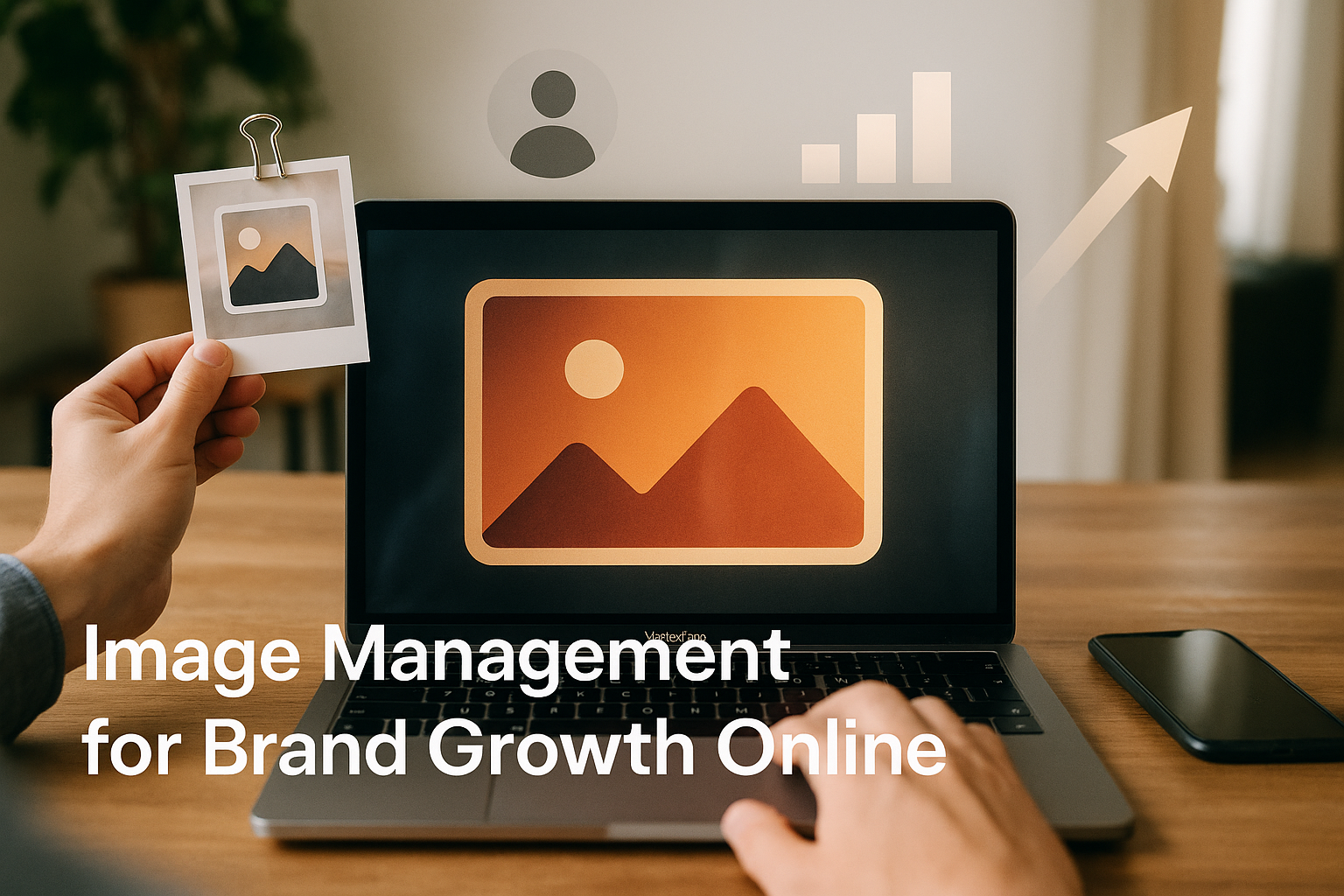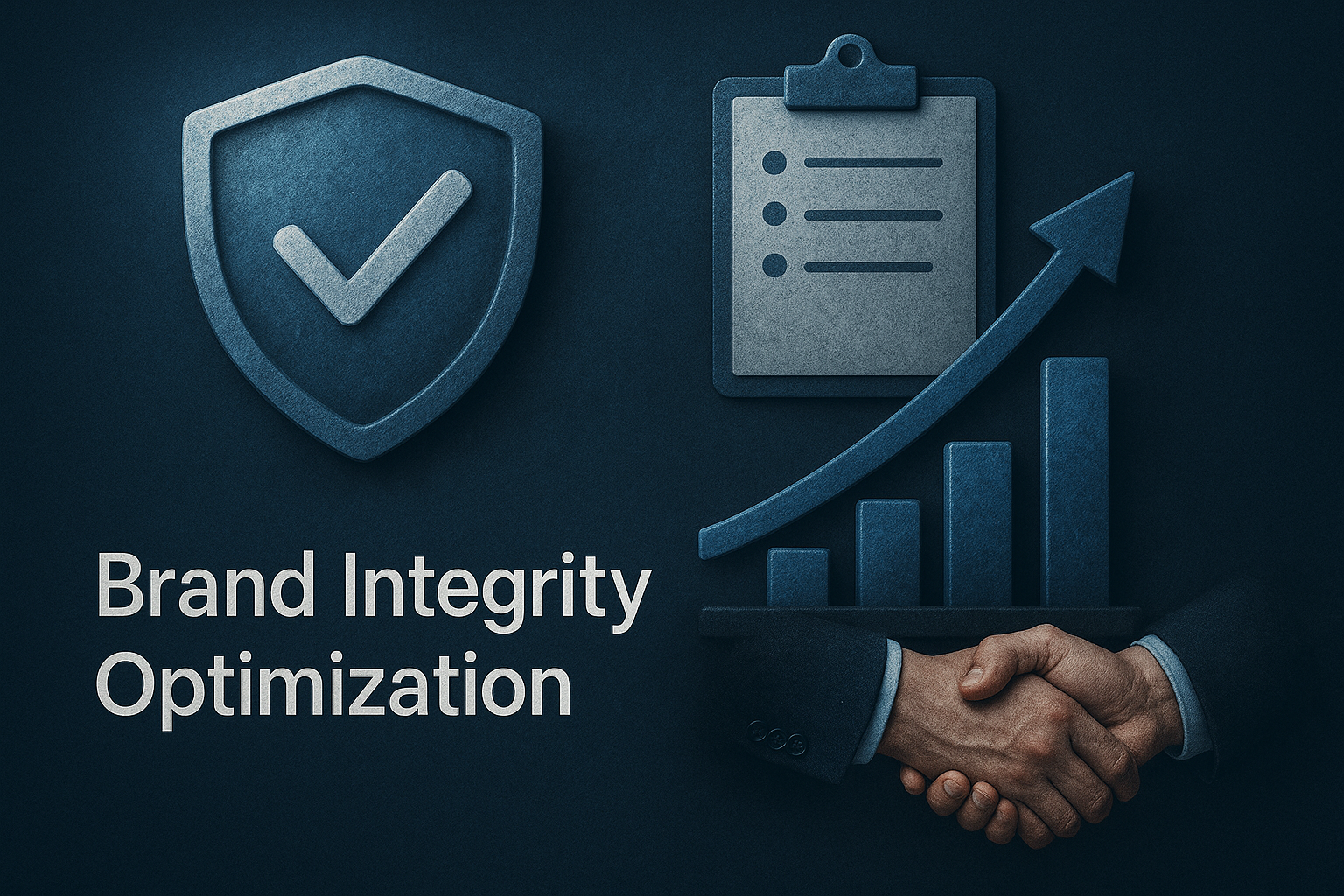Image management is the key to building trust, protecting your reputation, and creating a lasting digital presence. Here’s more on it.
It often begins with a picture. One post, one clip, one photo it can change how people see you, or your brand. That’s why image management isn’t just a trendy phrase. It’s a way to guide the story others tell about you. Each logo, each shot, each visual choice adds to that story.
But here’s the real part: it’s not only about looking sharp. It’s about trust. People decide fast. In a glance they know if they want to believe you, follow you, or buy from you. Online, those quick moments spread far. A review, a shared post, a viral photo they all shape how you’re seen. Sometimes they get it right. Sometimes they don’t. Either way, your reputation is on the line.
That’s why online reputation management and digital brand monitoring matter. And this guide walks through it step by step. How to manage your image. How to protect your reputation. Moreover, how to make every visual piece count. Together, it builds a stronger presence in a noisy digital world.
What Is Image Management?

It’s not just a logo. Not just a polished post on Instagram. Image management stretches further than that. It’s the sum of how people see you, how they piece your story together. Every picture, every graphic, every little detail online each one adds something. But if they don’t line up, the whole thing feels off. Sometimes it just looks scattered. Other times, it feels like you can’t be trusted.
Picture a garden. You drop in a few seeds. You water and you pull weeds. Some shoots rise quickly. Others take their time. A few never bloom. Image management feels the same. You keep feeding the content that builds trust. You cut back the parts that damage your name. And slowly, you shape something that grows steady, clear, and worth looking at.
Why It Matters Today
In today’s world, first impressions often happen online. A client sees your LinkedIn profile. A potential customer scrolls through your Instagram. A partner searches for your website. In all of these moments, they’re forming an opinion.
And opinions stick. That’s why image management matters more than ever. It’s not just about looking good, it’s about being understood, trusted, and respected.
The Core Elements of Image Management
- Consistency: Every platform you appear on should feel like part of the same story. Colors, fonts, tone, and visuals all need to align.
- Relevance: Your visuals should reflect who you are and what you do. Posting random images might catch attention, but it won’t build credibility.
- Accuracy: Outdated or incorrect visuals can confuse or mislead people. Make sure every image is true to your current brand.
- Engagement: Image management isn’t just about broadcasting. It’s about connecting. Respond to comments, listen to feedback, and adapt when needed.
Practical Examples in Action
Imagine a small boutique brand. They post a high-quality image of a product on social media. The colors match their website. The caption tells a story. Customers comment, share, and trust grows. That’s image management working.
Or think of a professional. Their profile photo is polished, consistent across platforms, and matches the tone of their industry. They get noticed for opportunities because their image feels credible.
It’s also about correcting courses. When a bad photo or post starts making the rounds, quick action matters. The faster you respond, the smaller the damage. That’s why image management ties so closely with reputation work. It’s not only about building a good picture it’s about guarding it too.
The Takeaway
Image management isn’t something you tick off a list. It keeps going. The internet never sits still. A trend blows up, then disappears before you know it. Something that looked modern yesterday can already feel old today.
That’s why you have to keep an eye on things, tweak when needed, and shift your style as the moment changes. It’s how you keep your digital identity steady.
But here’s the real part: it’s not just about how things look. It’s about trust. It’s about showing a clear story people can believe. When you get that balance right, the rest follows. Your reputation holds, brand feels solid and your content gets noticed. Skip it, and even the best ideas can disappear in the noise.
And that’s where Impact Authority comes in. Our PR specialists make sure that your image remains maintained in the eye of your audience.
Online Reputation Management

Image management lays the foundation. What you share online matters. What others say matters too. All of it builds how people see you. That’s why online reputation management exists. It’s about watching, listening, and stepping in when you need to. Think of it like a fire. You want it to stay warm, not burn out of control.
Why ORM Matters
People talk. They leave reviews, comment on posts and share experiences—good or bad. And in today’s digital world, those words travel fast. One unhappy customer, one viral tweet, or even an overlooked comment can shape perceptions. ORM helps you notice these sparks early, so they don’t turn into flames.
It’s not only about fixing the bad stuff. It’s also about pushing the good. A kind review. A happy customer’s story. A campaign people actually love. Those things carry weight. They spread fast when you let them.
Skip ORM, though, and it’s like leaving your door wide open. Anyone can walk in. Anyone can talk. And you don’t always get to pick what sticks
The Core of ORM
- Monitoring: Keep an eye on reviews, social media mentions, press articles, and forums. You don’t need to read every word, but you need to know the story being told about you.
- Responding: Feedback deserves a reply. Thank the positive, address the negative calmly, and always stay professional. It shows people you care.
- Correcting the Mistakes: Mistakes happen. Wrong image posted? Misleading info circulating? Fix it fast. Correcting errors shows accountability and builds trust.
- Highlighting Strengths: Share success stories, showcase testimonials, and promote achievements. ORM isn’t only about damage control it’s also about celebration.
How Image Management and ORM Work Together
Think of image management as the blueprint and ORM as the maintenance crew. One designs and sets the tone. The other ensures the structure stays solid. Post consistently, monitor mentions, respond where needed, and watch your digital presence grow stronger.
Practical Examples
Imagine a small restaurant. They post beautiful images of dishes (image management). A customer posts a complaint online. The restaurant replies politely, fixes the issue, and shares a thank-you post for feedback (ORM). The result? A reputation that feels authentic, caring, and reliable.
Or consider a professional consultant. Their profile photos, branding visuals, and content are polished (image management). Then, someone posts a misleading comment. They respond with clarity and professionalism, correcting the misunderstanding without drama (ORM). That mix earns trust, not just attention.
Beyond the Surface
Online reputation management never really ends. You don’t fix it once and move on. Things online change too fast. New platforms show up. Trends fade. People talk. Every day brings something new.
That’s why you keep an eye on it. You reply when you should. You push the good forward so it’s not buried. It’s simple work, but constant.
Put it next to image management and you get the full picture. What people see and what they remember lines up with the story you want. At its core, it’s trust. It’s credibility. And it’s stepping in early before small sparks turn into fires.
Digital Brand Monitoring

If image management sets the stage and online reputation management keeps it steady, digital brand monitoring is the spotlight. It’s about watching how your brand moves, what people say, and how it’s being perceived across the vast digital world. Think of it like having your finger on the pulse every beat tells a story.
Why Monitoring Matters
Brands don’t just sit untouched. People mention you. Maybe in a tweet, maybe in a blog, maybe in a quick side comment. Most of the time it’s small. But small things pile up. If you’re not watching, they turn into bigger waves. That’s why digital brand monitoring matters; it lets you see it before it gets away from you.
It’s not just about avoiding trouble. It’s not just about problems. Wins matter too. A good review, a post that takes off, a picture people keep sharing those things can push you forward. But only if you catch them while they’re hot. Miss it, and even strong image management won’t shine. It’s like having a great piece of art stuck in the back room where no one ever looks.
Key Elements of Digital Brand Monitoring
Listening Everywhere: Social media, forums, blogs, news sites your brand is being talked about everywhere. Monitoring tools help track these mentions without losing your mind.
- Sentiment Analysis: Not all mentions are equal. Some praise, some criticize, some just mention. Understanding the tone helps you decide how to act.
- Trend Spotting: Patterns emerge. Maybe a competitor is gaining attention, or a campaign resonates unexpectedly. Monitoring gives you insight before it’s too late.
- Reporting and Action: Data is useless if it sits in a spreadsheet. Turn insights into actions, adjust campaigns, highlight successes, and address problems fast.
How It Links to Image Management
Every visual, every post, every shared story contributes to your brand image. If you manage those images well but never monitor their reception, you’re flying blind. Digital brand monitoring bridges that gap. It shows you how your carefully crafted visuals, logos, and campaigns are being perceived and where you need to adjust.
Practical Examples
A fashion brand launches a new collection online. Their images are on point (image management), but they also monitor social chatter. Suddenly, a particular design goes viral. They capitalize on it, sharing more content, engaging with fans, and boosting sales.
A tech startup posts product videos across platforms. They notice some users struggling with a feature. Monitoring lets them respond quickly, update tutorials, and even improve the product experience. In both cases, brand monitoring turns information into action.
In Short
Watching your brand online isn’t really a choice anymore. It just is. Things move quick. One platform fades, another shows up. People switch, trends flip. What worked last week might feel tired today. If you’re not paying attention, you miss it.
That’s why you keep checking. You catch the small stuff, spot when the tone shifts and you fix it before it grows.
And when you put that together with image management and reputation work, it makes sense. You see what people see. You hear what they’re saying. Moreover, you step in early. It’s not fancy it’s just staying in control in a noisy space.
Visual Content Optimization

Generated by AI
A picture doesn’t just sit there. It speaks. It shows people who you are. What you stand for. Why do you matter? But here’s the thing if that picture isn’t set up right, it might never land where it should. That’s why visual content optimization matters. It’s not only about picking a good photo. It’s about making sure that same photo works everywhere your site, search, social
Why It Matters
Attention spans are short. People scroll fast. If your visuals load slowly, look blurry, or don’t show up in searches, you lose them before they even see your message. On the flip side, optimized content loads quickly, looks sharp, and gets noticed. It gives your brand a professional edge and keeps people engaged. Without it, even the best image management plan falls flat.
The Essentials of Visual Content Optimization
- Size and Speed: Large files slow down websites. Compressing images keeps them fast without losing quality.
- Alt Text and Metadata: Search engines can’t “see” images, but they read descriptions. Adding alt text makes visuals searchable and accessible.
- Consistency: Colors, filters, and formats should line up with your overall brand identity. That way, your content feels unified across platforms.
- Mobile-Friendly: Most people browse on their phones. Optimized visuals adapt to screens of all sizes without cutting off or looking awkward.
- Accessibility: Adding captions to videos or descriptive text to graphics helps reach wider audiences.
How Optimization Shapes Perception
Think of it this way: image management builds the story, while visual content optimization makes sure the story gets seen. A beautiful product photo that loads instantly? That builds trust. A video with captions that someone can watch on mute during a commute? That’s accessibility in action. Small tweaks create a big impact.
Examples in Action
An online store uploads high-resolution product photos. At first, they look amazing but slow the site. Customers bounce. After compressing files, pages load fast. Sales improve.
A lifestyle blogger adds alt text to all images. Suddenly, their posts rank higher in search results. More clicks, more readers, more growth.
Even a small café can benefit. They post photos on Instagram with consistent filters and clear tags. The feed looks polished. Customers feel the brand is reliable and stylish, not random or messy.
Bottom Line
Visual content optimization isn’t a one-time task. Platforms change their rules. Search engines update. Audience habits shift. Staying on top of these changes ensures your visuals stay effective.
At the core, it’s about connection. When visuals are optimized, people can find them fast, they load quickly, and they look good. Add that to smart image management, and your brand feels sharp and strong. That’s what decides it getting lost in the scroll, or standing out where people stop.
Integrated Image and Reputation Strategy

Image management on its own is powerful. Online reputation management has its place. Visual content optimization adds another layer. But the real strength comes when all of these pieces connect. That’s when you move from scattered efforts to a complete strategy, one that feels consistent, credible, and resilient.
Why Integration Matters
Think of it like a band. A guitar solo might sound great on its own. A drumbeat can hold attention. A voice might carry emotion. But together, they create music. Your brand works the same way. Image management handles the look, reputation management shapes the trust, and optimization makes sure it all gets seen. Without integration, you’re just playing random notes.
The Moving Parts Working Together
Image Management sets the stage. It decides how you show up visually and how people first perceive you.
Reputation Management steps in when people talk about you. It makes sure the conversation matches the story you want to tell.
Brand Monitoring keeps the watchful eye. It spots trends, flags risks, and highlights opportunities.
Visual Optimization ensures your content doesn’t just exist, it performs. It loads fast, shows up in search, and looks sharp everywhere.
Together, they build a system. Each part feeds into the other.
Examples of Integration in Action
Picture a new tech startup. They launch with sleek branding (image management). People start reviewing their product online. The company responds quickly, clarifying questions and highlighting positive feedback (reputation management).
They track conversations across platforms, noticing a feature everyone’s talking about (brand monitoring). Then they optimize product videos with captions and fast-loading formats (visual content optimization). The result? A story that feels complete, consistent, and trustworthy.
Or take a nonprofit. Their visuals tell a heartfelt story. Their team monitors press mentions and social chatter to see how the message lands. They reply to donors and supporters, thanking them personally. And they optimize images and videos so campaigns reach wider audiences. Each action supports the next.
The Benefits of a Unified Approach
When you integrate, you get more than the sum of the parts:
- Consistency across every platforms
- Trust that grows because words and visuals match.
- Resilience when problems come because you’re ready.
- Visibility that doesn’t fade, since your content is optimized for reach.
Key Point
Integration isn’t about doing everything at once. It’s about aligning your efforts so they work in harmony. That means setting clear goals, choosing the right tools, and staying flexible when the digital world shifts.
At the end of the day, an integrated image and reputation strategy ensures people don’t just see your brand they believe in it. It’s not just looking polished or fixing issues as they come. It’s telling one strong, consistent story that holds up no matter where, or how, it’s seen.
Crisis Management and Recovery
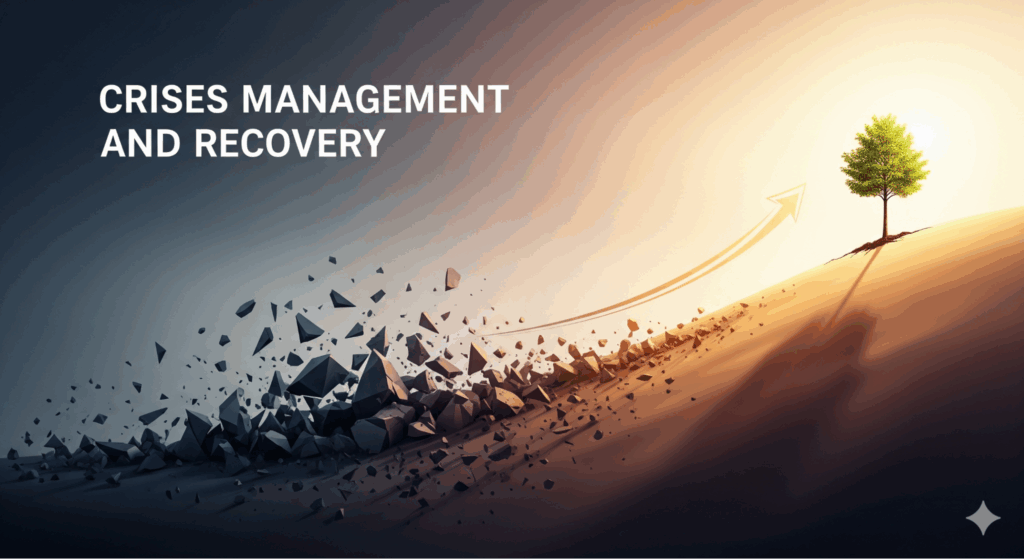
Crises don’t send calendar invites. They just arrive loud, messy, and usually at the worst time. A bad review goes viral. A campaign misses the mark. A headline twists the story. Suddenly, your brand feels exposed. That’s when crisis management steps in. Not to erase the problem, but to keep it from defining you.
Why Being Ready Matters
Think of it like carrying a first-aid kit. Most days, it stays tucked away. But when you trip, you’re grateful it’s there. A crisis plan works the same way. It doesn’t stop the stumble, but it softens the fall. With clear steps mapped out, you don’t lose precious time debating what to do, you just act.
Quick Action: Stop the Spiral
The first few hours matter most. Do nothing, and rumors take over. Do something clumsy, and the damage grows. The goal is simple: contain the fire. Maybe that means releasing a short, honest statement. Maybe it means pausing a tone-deaf campaign. What you don’t want is silence. Silence feels like hiding, and hiding never builds trust.
How Image Management Fits In
This is where image management moves beyond good photos and sharp graphics. During a crisis, your look, tone, and presence all send signals. A video from the founder can feel more genuine than a polished press release.
Updating visuals, showing solidarity or reflecting accountability can show people you mean what you say. It’s not just words that matter; it’s how they’re delivered.
Recovery Is a Long Game
Once the fire’s out, the harder part begins rebuilding trust. And that takes patience. You don’t win people back with one campaign or one apology. You win them back with small, steady actions.
- Acknowledge what happened. Don’t dance around it.
- Share progress openly. Let people see the steps you’re taking.
- Reconnect with your audience. Engage again, not just with ads, but with genuine conversations.
- Trust grows slowly, but it grows.
Lessons Hidden in the Chaos
Every stumble teaches something. Maybe your monitoring tools were too slow. Maybe your team wasn’t aligned, or, Maybe your values weren’t communicated clearly enough. Whatever the case, recovery isn’t just about bouncing back, it’s about learning. And those lessons make the next challenge easier to face.
Why Crises Can Build Loyalty
Handled badly, a crisis can scar a brand. But handled well, it can actually create loyalty. People often remember not the mistake, but the response. Did the brand show up? Did it own the issue? and Did it treat people with honesty and care? Those answers matter more than perfection.
Resilience Becomes Reputation
At the end of the day, crisis management and recovery are about resilience. Brands that adapt, respond with sincerity, and stand tall during rough patches often emerge with a reputation that’s stronger, not weaker. Because the truth is, nobody expects perfection. What people expect is honesty.
And if you can deliver that even in the middle of chaos you don’t just protect your brand. You prove its strength
Tools and Resources for Effective Image Management
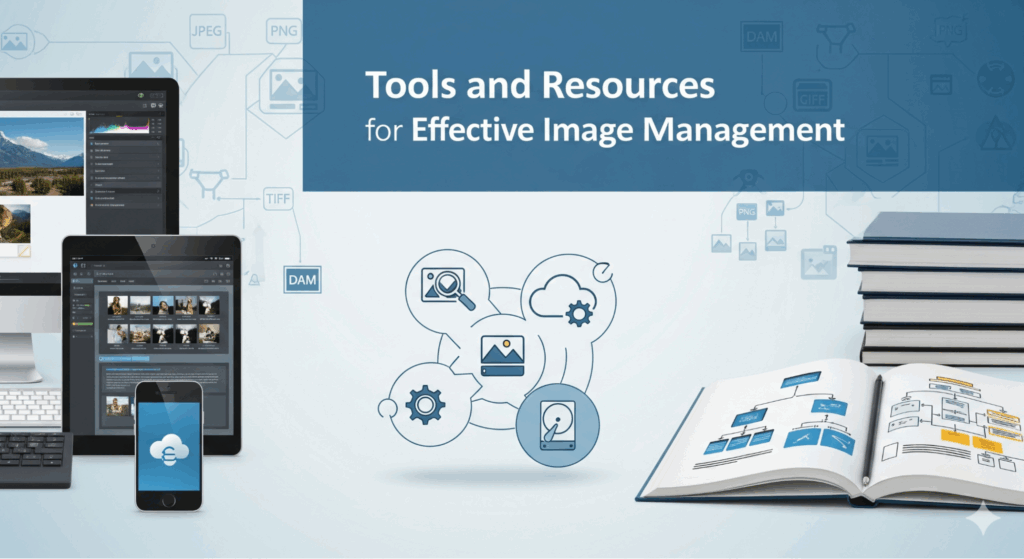
Managing your image online isn’t guesswork anymore. It’s too big for that. Too fast. Things spread in minutes, sometimes seconds. Without tools, you’re flying blind. With them, you at least get a map even if the road is still bumpy.
Start by Listening
Before posting, before planning, listen. Always. A simple Google Alert can do more than most people think. Want something bigger? Tools like Brandwatch track mentions across platforms. Someone drops your name in a late-night forum thread? You’ll see it. And trust me, catching it early matters. It’s the small stuff that snowballs.
Keeping Tabs on Reputation
Reputation isn’t about fixing what’s broken. It’s about watching the cracks before they widen. Platforms like Reputation.com or even built-in dashboards show when your name shows up, good or bad. Think of it like checking your phone battery. You don’t wait until it’s dead to plug in.
Making Visuals Pull Their Weight
Pretty designs don’t mean much if nobody notices. Sure, Canva Pro or Adobe Express make your posts look clean, but pair them with data. Tools like SEMrush or Google Analytics tell you if those posts actually work. Do they pull clicks? Do they hold attention? A sharp graphic with zero engagement is just decoration.
Handling Too Many Channels
Most brands aren’t on one platform, they’re everywhere. Instagram, LinkedIn, TikTok, maybe even YouTube. Posting manually? Exhausting. That’s where Buffer or Sprout Social save your sanity. Schedule things, line them up, and stop chasing your own tail.
When Things Go South
Let’s be real. Not every day is smooth. A sudden spike in negative comments, a headline you didn’t expect would happen. Some monitoring tools flag these shifts the moment they start. Pair that with a human response plan, and you’re not scrambling. The point isn’t to avoid every mistake. It’s to not let one mistake own the story.
Don’t Drown in Tools
Here’s the trap: downloading everything. Dashboards, alerts, schedulers you end up with ten tabs open and no clarity. You don’t need that. Pick a few. Use them well. Let people not apps make the judgment calls. Tools only hand you the signals. You decide what they mean.
The Bottom Line
Image management doesn’t live in one platform or one app. It’s the mix. A few smart tools, some steady habits, and a team that knows how to act. That’s it. Simple doesn’t mean weak. Sometimes, it’s what keeps things steady when the noise gets loud.
Ethics and Authenticity in Visual Branding
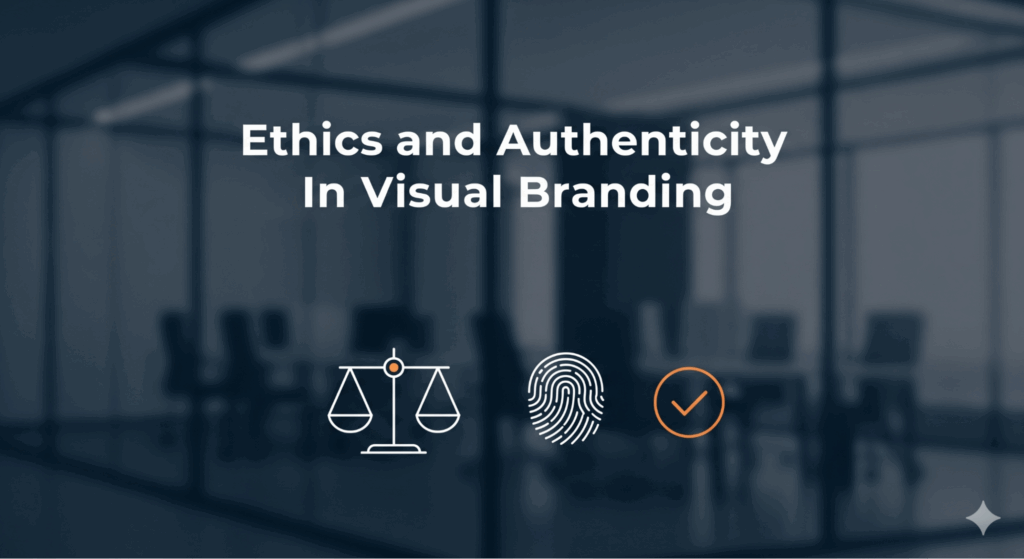
Let’s face it, images carry weight. A single photo or graphic can shape opinion faster than a thousand words. But here’s the catch: if people sense it’s fake, the trust crumbles. That’s why authenticity is no longer optional. It’s the foundation. And in image management, ethics and honesty play a bigger role than ever.
The Rise of Doubt
Think about it. Deepfakes. AI-generated faces. Over-edited photos. Audiences see so much content every day that they’ve learned to question it. They zoom in. They ask, “Is this real?” And once doubt sets in, it’s hard to shake. That’s why brands that stay true, unedited, clear, transparent gain an edge. They stand out in a world of filters.
More Than Pretty Pictures
Sure, polished visuals look good. But when every shot is too perfect, something feels off. People connect more with raw moments, a behind-the-scenes snap, a team photo without airbrushing, a product shown as it really is. These little touches send a simple message: we’re real. And real builds trust faster than flawless ever could.
Ethics in the Details
It’s not just about being honest with visuals. It’s about respecting how they’re used. Do you have the rights to that photo? Did the people in the shot give consent? Are you editing in ways that mislead? These may feel like small details, but they carry big weight. Audiences notice. And when they do, how you answer matters more than the image itself.
Owning Mistakes
Slip-ups happen. Maybe a campaign leans too heavily on stock photos. Maybe editing crosses the line. When called out, the worst move is denial. The better path? Own it. Explain it. Fix it. Audiences don’t expect brands to be perfect. They expect them to be accountable. And accountability strengthens image management far more than excuses ever will.
Why Authenticity Wins
At the end of the day, people buy into stories they can believe. Authentic visuals make those stories stronger. They connect the brand to the audience in a way that feels personal. And while trends will change new tools, new filters, new platforms the need for honesty won’t. It’s the one constant.
Wrapping It Up
Visual branding isn’t just about what looks good. It’s about what feels right. Ethics keep you grounded. Authenticity keeps you trusted. Together, they shape how people see you. And in the bigger frame of image management, that combination is what makes the difference between being just another name online or being a brand people actually believe in
User-Generated Content and Community Influence

People trust people. Not ads, press releases and glossy campaigns. When someone posts a photo, leaves a review, or shares their real experience, it feels genuine. That’s why user-generated content has become such a big deal. It shapes how others see a brand in ways no polished message ever could.
And when you think about image management, this is one area you can’t afford to ignore.
Why It Hits Different
Here’s the thing an ad says what you want people to believe. A customer’s post? That’s what people actually believe. Big difference. A short TikTok, a quick Instagram story, even a review tucked away on a forum… These little moments travel fast. And they carry weight. One good post can build trust. One bad one can stir doubt.
Building with the Crowd
The smart move isn’t to fight it. It’s to embrace it. Encourage people to share their stories. Celebrate when they do. Brands that invite the crowd in build stronger ties. Think about it when someone sees their photo reposted, or their comment featured, they don’t just feel noticed. They feel part of something. That’s community.
The Double-Edged Sword
Of course, not all user content glows. A harsh review or a frustrated post can sting. But here’s the truth, it’s also a chance. Respond with care, and you show you’re listening. You show you value feedback, even when it isn’t pretty. Many times, that kind of reply earns more respect than ignoring the noise.
Keeping It Real
There’s a temptation to polish everything. To repost only the perfect stuff. But people spot that. They want real stories, not staged ones. Authenticity is the glue here. A mix of the good, the casual, and yes, even the imperfect, paints a fuller picture. It’s messy sometimes, but it’s real. And real sticks.
Influence That Grows
Communities don’t form overnight. They grow when people feel heard and valued. Over time, those small acts of sharing a customer’s post, thanking someone for feedback, spotlighting their work build a base of loyal voices. And those voices? They echo louder than any slogan. They become your advocates, defending and promoting your brand without being asked.
Looking Ahead
User-generated content isn’t just extra marketing material. It’s the heartbeat of digital communities. It’s what makes a brand human. In the bigger picture of image management, these voices hold more influence than most companies realize. Treat them with care, respect their honesty, and they’ll do more for your reputation than any ad spend ever could
Crisis Response and Damage Control

Crises don’t knock politely. They just barge in. One morning things look normal, the next your inbox is blowing up, Twitter’s buzzing, and a single post is reshaping how people see your brand. That’s how fast it moves. That’s why image management matters most when everything feels like it’s spinning.
Don’t Go Quiet
Here’s the thing: silence feels safe, but it almost never is. If you don’t speak, someone else will. And they’ll shape the story in ways you probably won’t like. Even a quick “We hear you, we’re on it” beats days of nothing. People want to know you’re present. You don’t have to fix it in an hour. But you do have to show up.
Plans Save Panic
Think about it. The worst time to learn how to swim is when you’re already drowning. Same with a crisis. Brands that have a plan a simple checklist of who talks, how fast, what tone stays calmer. The plan doesn’t make the storm go away. But it keeps you from thrashing. And thrashing is what makes people lose faith.
Owning the Story
If you messed up, say it. People actually respect that more than slick excuses. “Yes, we got it wrong. Here’s what we’re doing about it.” Simple. Direct. Humans. The truth always leaks anyway, and trying to bury it just makes the eventual fallout worse. Honesty takes the sting out.
The Power of Transparency
The audiences are sharp. They can smell half-truths. They scroll, they share, they dig. If you’re clear from the start, even when it hurts, you get credit for it. Transparency doesn’t erase the problem, but it stops it from growing teeth.
The Lesson Inside the Mess
Not every crisis leaves a scar. Some become turning points. People remember how you handled it more than the slip itself. A clumsy apology can do lasting damage. But a heartfelt, well-backed one? That can flip the story. The stumble becomes proof that you’re real, not just polished marketing.
Recovery Takes Time
Here’s what a lot of brands forget: one post, one press release it’s not enough. Trust rebuilds slowly. People watch. They notice if you follow through or if you vanish once the noise dies down. Image management here is less about quick words and more about consistent action. Day after day. That’s how you stitch things back together.
Final Thought
Crisis response isn’t about being flawless. Nobody buys perfection. It’s about being present, being honest, and showing you can take a hit without hiding. In the end, mistakes fade. But the way you handle them? That’s what people remember
Future Trends in Digital Image and Brand Management
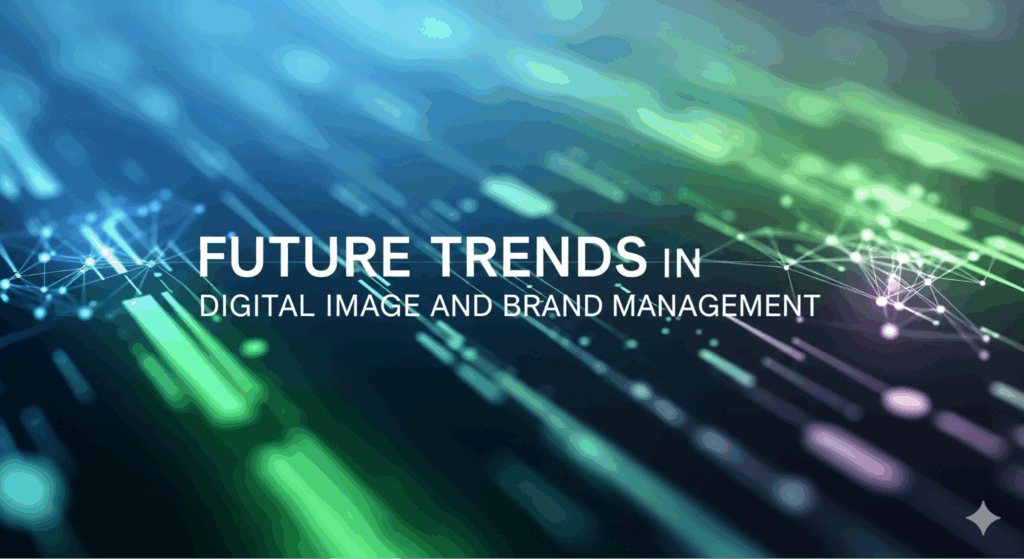
Nothing online stays the same for long. Platforms rise. Algorithms shuffle. Audiences get bored and move on. What’s sharp today might feel dated in six months. That’s why brands can’t just look back. They have to scan the road ahead even if the view is foggy.
AI Gets Sharper
We’ve already seen AI crawl into brand monitoring. It flags mentions, pulls reports, and even suggests responses. But the next step? Context. Tone. Emotion. Tools will know if people are laughing with you or laughing at you. That changes how image management works it’s not just counting mentions, it’s reading the mood.
Pictures as Search Bars
Typing less. Snapping more. That’s where we’re heading. Visual search is sliding into everyday life. Google Lens, Pinterest, even shopping apps let people point their camera and get results. Which means your images have to be more than pretty they have to be recognizable. Easy to tag. Easy to find.
Raw Beats Perfect
Perfect polish is starting to feel fake. People want raw. Quick phone videos. Behind-the-scenes mess. User photos that aren’t staged. It doesn’t mean quality dies, it means humanity shows. And the brands that lean into that will feel closer to their audience.
Personal Feels Normal
Generic messages? People scroll past. With stronger analytics, targeting gets sharper. Imagine images tuned to not just demographics, but moods, locations, and habits. That personal edge won’t feel fancy in the future, it’ll feel expected.
Values on Display
It’s not just about products anymore. People ask: what does this brand stand for? Sustainability. Inclusion. Responsibility. These things matter. And image management will have to reflect them not just in words, but in the visuals themselves. If the story doesn’t match the pictures, audiences will notice fast.
Video Everywhere
Short-form clips are still climbing. TikTok, Reels, Shorts the list grows. And they shape how stories spread. If you can’t condense your message into a snappy video, you risk fading behind louder voices. The future isn’t still images or video. It’s both, woven together.
Consistency Wins
One channel isn’t enough. Not anymore. Your website, socials, ads, even offline graphics all need to hum the same tune. That’s how people recognize you instantly. Disjointed branding? It confuses me. Consistency? It builds trust.
Stay Flexible or Fall Behind
Here’s the truth: nobody knows the exact shape of the next big shift. Maybe it’s a new platform. Maybe it’s new tech, or, maybe it’s something we can’t see yet. But the brands that keep listening, keep testing, and stay light on their feet they’re the ones that won’t just survive, they’ll stand out.
The Road Ahead
Future trends in image management point to more visuals, more personal touches, and stronger values at the core. The tools will change. The habits will shift. But the brands that mix adaptability with authenticity will always land on their feet. Because in digital space, the only thing permanent is change.
Conclusion
Nothing in the digital world stays still. Platforms change. Trends come and go. What worked last month might feel outdated today. That’s why image management is never a box you check once and forget it’s a rhythm you keep, day by day.
At the heart of it, it’s not about being perfect. It’s about being present. Watching closely. Making small shifts before they turn into big problems. And at the same time, grabbing the good moments and letting them shine.
When you weave it all together reputation, monitoring, visuals, and strategy you don’t just protect your brand. You shape how people see it, and more importantly, how they remember it. In the end, that’s the real goal. Not just likes, not just clicks. But trust. Connection. A brand that feels real in a noisy world.

